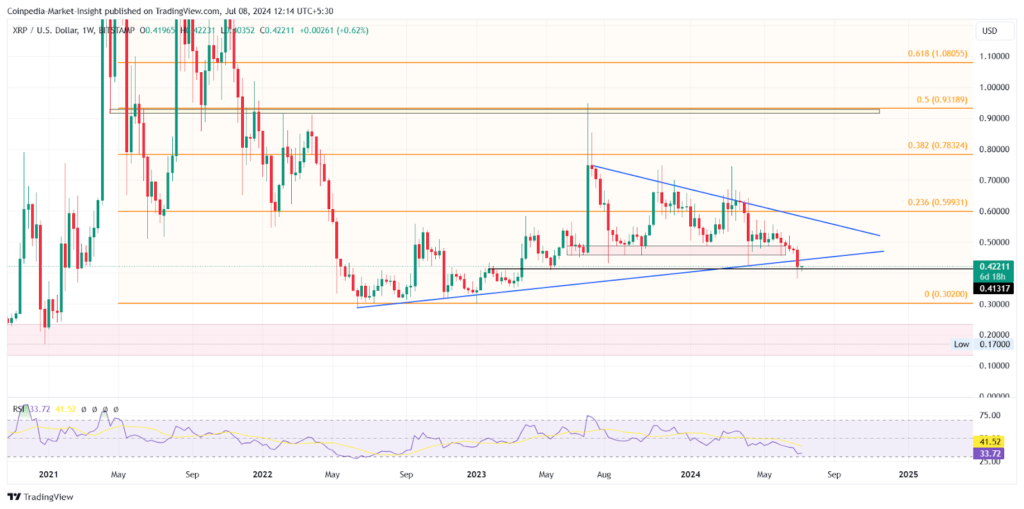The crypto market had a tough week, with many altcoins suffering. XRP, in particular, fell 11% last week, below the important $0.50 mark. As Ripple struggles below $0.50, experts expect selling pressure to grow this week. The coin now sits at its next support level of $0.40, raising fears of a new 52-week low.
XRP’s Current Standing
XRP remains the 7th largest cryptocurrency, with a market value of $23.47 billion. Over the past five weeks, its price has fallen by 20%, breaking below the $0.50 level. On Sunday, XRP traded at $0.41968, down 6.58% for the day.

Source: Tradingview
Looking at the weekly chart, XRP broke out of its triangle pattern, falling below the upward support trend line. A Doji candle now sits at the $0.41 mark, showing market uncertainty.
Traders lost $2 million in long positions, highlighting bearish solid sentiment. The 24-hour trading volume jumped 57%, fueling the current downward trend. The break from the triangle pattern suggests Ripple might fall further. If it drops below $0.40, it could test support at $0.32 or even $0.29.
Significant XRP Transfer Catches Eyes
A large transfer of 37,390,000 XRP (worth about $16,064,836) from an unknown wallet to a Bitstamp exchange was tracked by Whale Alert, sparking talk about possible market effects. Such big moves can signal incoming sell pressure or strategy shifts by major XRP holders.
Ripple faces intense downward pressure from the market breakdown and possible whale selling. However, buyers are defending the $0.40 level, as seen by the price bounce in the daily chart.
A broader crypto market recovery could push XRP back above the trend line at this crucial point. If bulls take control and push past $0.50, XRP could aim for its previous high of $0.68. However, if it falls below $0.40, the price might tumble to $0.32 or $0.29.
Related Reading | Crypto Dip: How The MVRV Ratio Highlights Investment Opportunities
Furthermore, the author’s views are for reference only and shall not constitute investment advice. Before purchasing, please ensure you fully understand and assess the products and associated risks.




Comments (No)